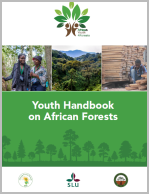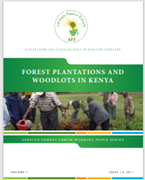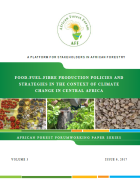Food-fuel-fibre production policies and strategies in the context of climate change in Central Africa
The Congo Basin (CB) forest is highly rich in biodiversity and contain mineral deposits of economic importance. The forest is under threat as a result of human activities including: agriculture (slash and burn and agro-industry plantations), mining, logging, infrastructural development, fuelwood extraction. Underlying factors that pose threat to the forest cover include: demographic pressure, political instability, weak governance and institutional arrangements and the quest for economic growth. The forest cover has witnessed a change over the last three decades. The deforestation rate for the CB forest between 1990 and 2000 was estimated at 0.09% while the forest degradation rate for the same period was estimated at 0.05%. Between 2000 and 2005, the deforestation and forest degradation rates of the region was estimated at 0.17% and 0.09% respectively. Of the CB countries, the Democratic Republic of Congo (DRC) has the highest rate of deforestation and forest degradation while Equatorial Guinea emerged as the country with the least deforestation rate.
Author(s) list
Chia, E., Enongene, K., Fobissie, K.Country
Congo, DRC, Equitorial GuineaSubject Area
Biofuel, Climate change, Forestry
Publication type
Working PaperRelated publications
View More





